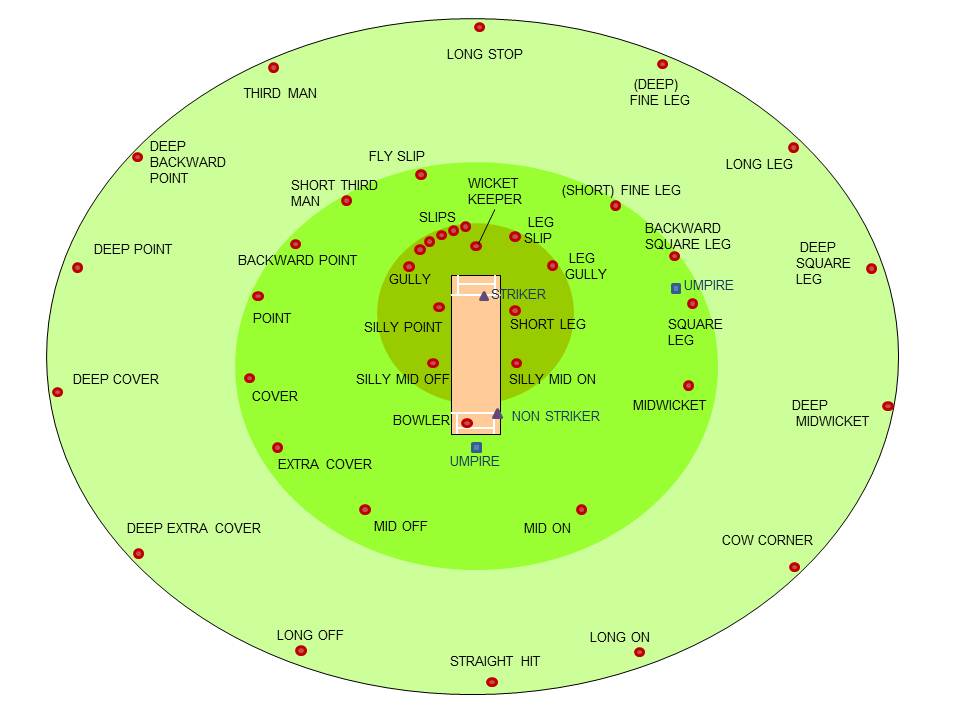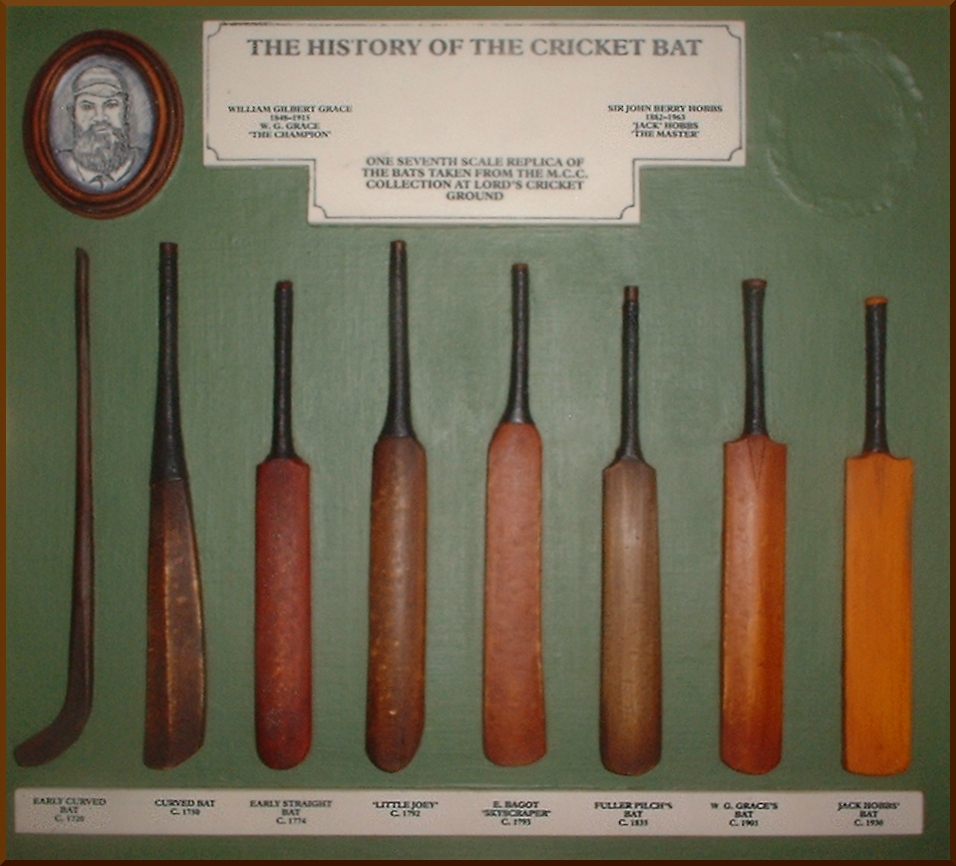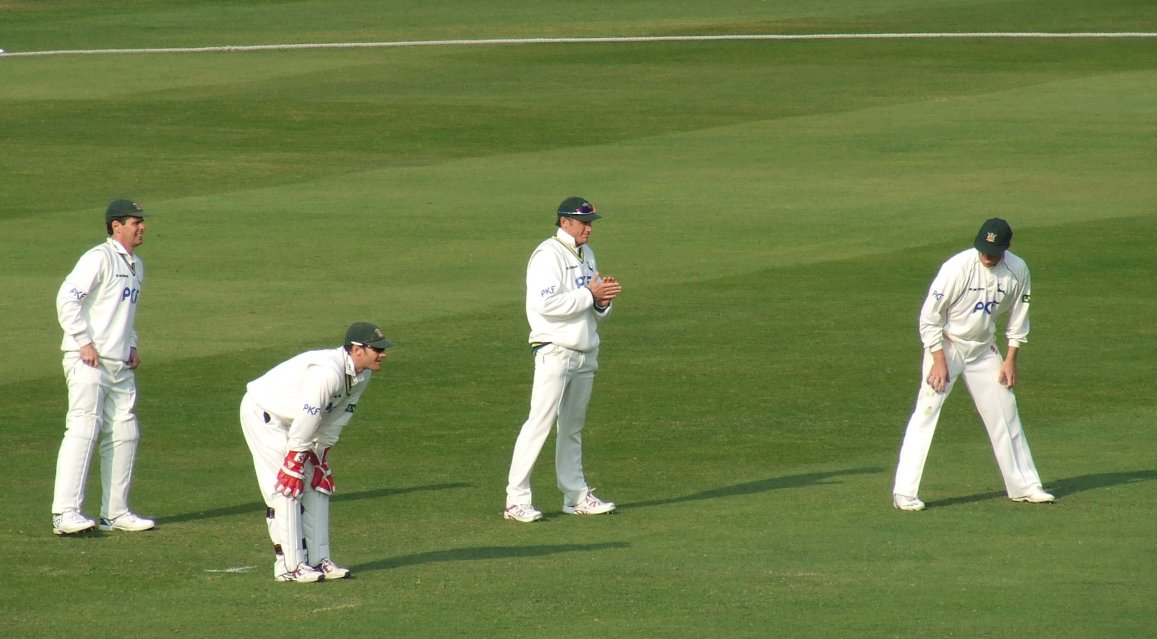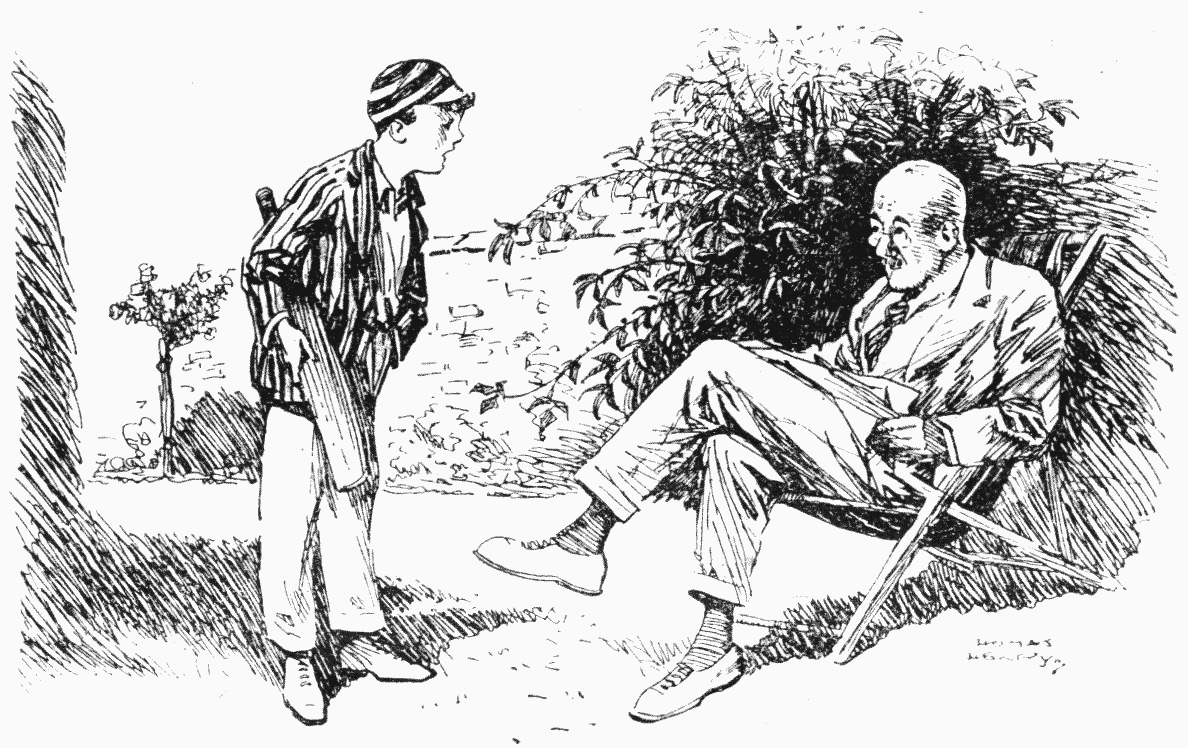|
Cow Corner
Cow corner is a region of the field in cricket. The location of cow corner depends on a batsman's handedness, but it is always a part of the field in the deep on the batsman's leg side, typically stretching between deep-midwicket and long on. The diagram shows the location of cow corner for a right-handed batsman. Cow corner is thought to be named after an area on the ground at Dulwich College where cattle would often graze. This has led to the naming of ''Cow shots'', which are wild and risky shots that tend to end up at cow corner, and are considered to be mostly played by players with little knowledge of, or ability to apply, the more difficult techniques of the game. Such players were supposed to be particularly prominent in the type of cricket played in rural or agricultural areas, where players did not have exposure to more sophisticated methods of playing. Such shots are also called agricultural. This region of the field has been somewhat more frequented in more recent ... [...More Info...] [...Related Items...] OR: [Wikipedia] [Google] [Baidu] |
Cricket Field
A cricket field or cricket oval is a large grass field on which the game of cricket is played. Although generally oval in shape, there is a wide variety within this: perfect circles, elongated ovals, rounded rectangles, or irregular shapes with little or no symmetry – but they will have smooth boundaries without sharp corners, almost without exception. There are no fixed dimensions for the field but its diameter usually varies between for men's cricket, and between and for women's cricket. Cricket is unusual among major sports (along with golf, Australian rules football and baseball) in that there is no official rule for a fixed-shape ground for professional games. In some cases, fields are allowed to have even greater peculiarities, such as the 2.5m slope across the Lord's Cricket Ground, or the lime tree which sat inside the fence of the St Lawrence Ground. On most grounds, a rope demarcates the perimeter of the field and is known as the '' boundary''. Within the bound ... [...More Info...] [...Related Items...] OR: [Wikipedia] [Google] [Baidu] |
Cricket
Cricket is a Bat-and-ball games, bat-and-ball game played between two Sports team, teams of eleven players on a cricket field, field, at the centre of which is a cricket pitch, pitch with a wicket at each end, each comprising two Bail (cricket), bails (small sticks) balanced on three stump (cricket), stumps. Two players from the Batting (cricket), batting team, the striker and nonstriker, stand in front of either wicket holding Cricket bat, bats, while one player from the Fielding (cricket), fielding team, the bowler, Bowling (cricket), bowls the Cricket ball, ball toward the striker's wicket from the opposite end of the pitch. The striker's goal is to hit the bowled ball with the bat and then switch places with the nonstriker, with the batting team scoring one Run (cricket), run for each of these swaps. Runs are also scored when the ball reaches the Boundary (cricket), boundary of the field or when the ball is bowled Illegal delivery (cricket), illegally. The fielding tea ... [...More Info...] [...Related Items...] OR: [Wikipedia] [Google] [Baidu] |
Handedness
In human biology, handedness is an individual's preferential use of one hand, known as the dominant hand, due to and causing it to be stronger, faster or more Fine motor skill, dextrous. The other hand, comparatively often the weaker, less dextrous or simply less subjectively preferred, is called the non-dominant hand. In a study from 1975 on 7,688 children in US grades 1–6, left handers comprised 9.6% of the sample, with 10.5% of male children and 8.7% of female children being left-handed. Overall, around 90% of people are right-handed. Handedness is often defined by one's writing hand. It is fairly common for people to prefer to do a particular task with a particular hand. Cross-dominance, Mixed-handed people change hand preference depending on the task. Not to be confused with handedness, ambidexterity describes having equal ability in both hands. Those who learn it still tend to favor their originally dominant hand. Natural ambidexterity (equal preference of either hand) d ... [...More Info...] [...Related Items...] OR: [Wikipedia] [Google] [Baidu] |
Fielding (cricket)
Fielding in the sport of cricket is the action of fielders in collecting the ball after it is struck by the striking batter, to limit the number of runs that the striker scores and/or to get a batter out by either catching a hit ball before it bounces, or by running out either batter before they can complete their current run. There are a number of recognised fielding positions and they can be categorised into the offside and leg side of the field. Fielding also involves trying to prevent the ball from making a boundary where four "runs" are awarded for reaching the perimeter and six for crossing it without touching the grass. A fielder may field the ball with any part of their body. However, if, while the ball is in play, he/she wilfully fields it otherwise (e.g. by using their hat) the ball becomes dead and five penalty runs are awarded to the batting side, unless the ball previously struck a batter not attempting to hit or avoid the ball. Most of the rules cover ... [...More Info...] [...Related Items...] OR: [Wikipedia] [Google] [Baidu] |
Leg Side
The leg side, also called the on side, is a particular half of a cricket field. A cricket field may be notionally divided into two halves, by an imaginary line running down the middle of the pitch, through the middle stumps, and out to the boundary in both directions. The leg side is the half of the field ''behind'' the on-strike batsman, when the batsman is in normal batting stance. Which half of the field is the leg side therefore depends on whether the on-strike batsman is right-handed or left-handed. The other half of the field, in front of the on-strike batsman, is called the off side. From the point of view of a right-handed batsman facing the bowler, it can also be thought of as the left-hand side of the cricket field, and from the bowler's perspective, it is the right-hand side. With a left-handed on-strike batsman, the leg side is to their right, and from the bowler's perspective, it is the left-hand side. From the on-strike batsman's perspective, it is therefore the ... [...More Info...] [...Related Items...] OR: [Wikipedia] [Google] [Baidu] |
Dulwich College
Dulwich College is a 2-18 private, day and boarding school for boys in Dulwich, London, England. As a public school, it began as the College of God's Gift, founded in 1619 by Elizabethan actor Edward Alleyn, with the original purpose of educating 12 poor scholars. It began to grow into a large school from 1857 and took its current form in 1870, when it moved into its current premises. Admission by examination is mainly into years 3, 7, 9, and 12 (i.e. ages 7, 11, 13, and 16 years old) to the Junior, Lower, Middle and Upper Schools into which the college is divided. It is a member of both the Headmasters' and Headmistresses' Conference and the Eton Group. In the 2023 A-levels, the school saw 64.8% of its candidates score A*/A. The school is included in The Schools Index as one of the 150 best private schools in the world and among the top 30 senior schools in the UK. History 1619: The College of God's Gift On 21 June 1619, the College of God's Gift was establish ... [...More Info...] [...Related Items...] OR: [Wikipedia] [Google] [Baidu] |
Yorker
In cricket, a yorker is a ball bowled (a delivery) which bounces by the batsman's feet. This makes it very challenging for a batter to play. When a batsman assumes a normal stance, a yorker generally bounces on the cricket pitch on or near the batsman's popping crease. A batsman who advances down the pitch to strike the ball (typically to spin bowlers) may by so advancing cause the ball to pitch (or land) at or around their feet and may thus cause themself to be "yorked". Yorkers are considered to be one of the most difficult deliveries to bowl. Etymology The ''Oxford English Dictionary'' gives the derivation of the term as originating in Yorkshire, a notable English cricketing county. According to Oxford dictionaries, the term was coined because players from York bowled these deliveries. Another theory attributes the name to the other meaning of yorker which is a cheater. However, other derivations have been suggested. The term may derive from the 18th and 19th century sl ... [...More Info...] [...Related Items...] OR: [Wikipedia] [Google] [Baidu] |
Steve Waugh
Stephen Rodger Waugh (born 2 June 1965) is an Australian former international cricketer and twin brother of cricketer Mark Waugh. A right-handed batsman and a medium-pace bowler, Waugh is considered one of the greatest cricketers of all time. Waugh was a part of the Australian team that won their first world title during the 1987 Cricket World Cup. As Australian captain from 1997 to 2004, he led Australia to fifteen of their record sixteen consecutive Test wins, and to victory in the 1999 Cricket World Cup. Waugh is considered the most successful Test captain in history with 41 victories and a winning ratio of 72%. Born in New South Wales, where he began his first-class cricket career in 1984, he Australian national cricket captains, captained the Australia national cricket team, Australian Test cricket team from 1999 to 2004, and was the most Cap (sport), capped Test cricket player in history, with 168 appearances, until Sachin Tendulkar of India national cricket team, India b ... [...More Info...] [...Related Items...] OR: [Wikipedia] [Google] [Baidu] |
Baseball
Baseball is a bat-and-ball games, bat-and-ball sport played between two team sport, teams of nine players each, taking turns batting (baseball), batting and Fielding (baseball), fielding. The game occurs over the course of several Pitch (baseball), plays, with each play beginning when a player on the fielding team (baseball), fielding team, called the pitcher, throws a Baseball (ball), ball that a player on the batting team (baseball), batting team, called the Batter (baseball), batter, tries to hit with a baseball bat, bat. The objective of the offensive team (batting team) is to hit the ball into the field of play, away from the other team's players, allowing its players to run the Base (baseball), bases, having them advance counter-clockwise around four bases to score what are called "Run (baseball), runs". The objective of the defensive team (referred to as the fielding team) is to prevent batters from becoming Base running, runners, and to prevent runners base running ... [...More Info...] [...Related Items...] OR: [Wikipedia] [Google] [Baidu] |
Cricket Terminology
This is a general glossary of the terminology used in the sport of cricket. Where words in a sentence are also defined elsewhere in this article, they appear in italics. Certain aspects of cricket terminology are explained in more detail in cricket statistics and the naming of fielding positions is explained at fielding (cricket). Cricket is known for its rich terminology.''Glossary of cricket terms''. England Cricket Board. Retrieved 13 May 2008."Cricket Academy – Glossary". |
Leg Side
The leg side, also called the on side, is a particular half of a cricket field. A cricket field may be notionally divided into two halves, by an imaginary line running down the middle of the pitch, through the middle stumps, and out to the boundary in both directions. The leg side is the half of the field ''behind'' the on-strike batsman, when the batsman is in normal batting stance. Which half of the field is the leg side therefore depends on whether the on-strike batsman is right-handed or left-handed. The other half of the field, in front of the on-strike batsman, is called the off side. From the point of view of a right-handed batsman facing the bowler, it can also be thought of as the left-hand side of the cricket field, and from the bowler's perspective, it is the right-hand side. With a left-handed on-strike batsman, the leg side is to their right, and from the bowler's perspective, it is the left-hand side. From the on-strike batsman's perspective, it is therefore the ... [...More Info...] [...Related Items...] OR: [Wikipedia] [Google] [Baidu] |







